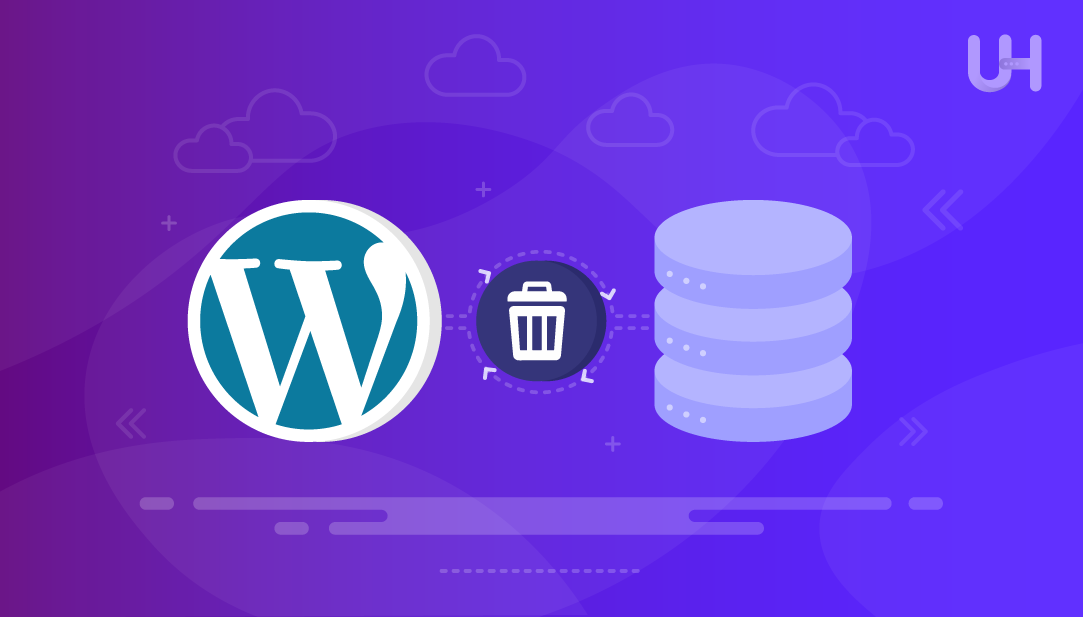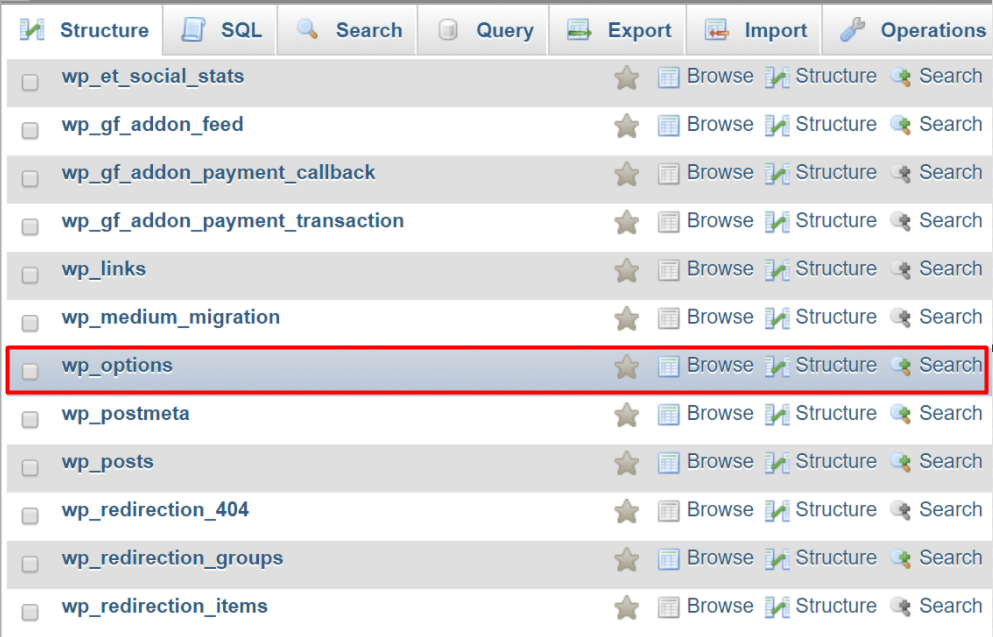Enabling WordPress Debug Log Mode
WordPress debugging helps us identify issues with our w...

The wp_options table is where WordPress stores crucial settings and plugin data for any WordPress site. it stores things such as the site URL, active plugin settings, theme custom settings, and many plugins save their settings to this table. The wp_options table can get quite large over time.
When data is marked as autoloaded, it gets loaded for each page request of the site. There can be performance implications if there is too much data marked as autoloaded. It could increase server response times, cause memory issues and degrade the full experience from the site. A too large wp_options table and too many autoloaded entries will hurt the overall performance of WordPress and potentially timeout your requests.
In this article, we will show you how to clean up your wp_options table safely. You are going to learn how to find large autoloaded options, find unused ones, and reduce the load to the server. In general, we will help you fix your site slowdown issues through a simple process of cleaning up your database.
The wp_options table is an essential part of the WordPress database. It handles site-level settings, and holds information used by the themes and plugins. Every time WordPress loads, it reads the wp_options table in order to apply the correct configurations.
In this table there are values that provide a timezone, the post title, the default language, and values for when a plugin has settings or presets for user use. Plugins use the wp_options table for saving user preferences or cached data for the site, prerogative details and options:

One of the parts of the table structure is the `autoload` flag on any setting. If the flag is set to “yes,” it signals to WordPress that that option needs to be loaded on every page. It improves speed for key data when the flag is set. However, if you have too many entries with `autoload` set to yes, with memory usage limitations, the entries in the autoload will eventually slow the performance of the site. The wp_options table is key in managing your WordPress database.
Experience UltaHost’s WordPress VPS Hosting!
Consider Ultahost’s WordPress hosting for 5x faster loading speeds and optimized performance with LiteSpeed technology.
Autoloaded data refers to entries in the wp_options table marked with autoload = yes. These entries load automatically whenever a page is visited, without running a specific query each time.
WordPress uses autoloaded data to quickly access essential settings, such as site options and plugin configurations. This reduces the number of separate queries and improves load time when the data is limited and relevant.
Problems begin when plugins or themes add unnecessary data to autoload. As the number and size of these entries grow, memory usage increases. This causes slow queries and longer page load times. Managing WordPress autoloaded data is key to keeping your site fast and avoiding performance issues.
The term autoloaded data is used to refer to entries in the wp_options table that are marked with autoload=yes. These entries are loaded automatically on every page visit, without having to run a specific query every time.
WordPress uses autoloaded data to make it easier to get to the important site setting options or plugin options. With wpengine autoloaded data, there are less queries to separate, and faster loading time assuming the number of entries are limited and relevant.
Things start to go wrong when plugins or themes start to add things to autoload, then the number and size of entries grow and subsequently the memory usage also grows, leading to slow queries and excessive page loading issues. Effective management of WordPress autoloaded data is essential for keeping your site running fast and and averting site performance problems.
To examine WordPress performance, we can begin with the size of the wp_options table. This can be accomplished with either phpMyAdmin or a direct SQL query. Looking for large autoloaded entries is essential in diagnosing performance and fixing what is slowing down your site. Read also How To Use MySQL JOINS with Examples.
In phpMyAdmin, you can open your database in the left pane and click on your `wp_options` table. Click on the “Search” tab near the top of the screen. We can filter the entry in the `autoload` column where it is set to “yes.” Or we can run this SQL query to see the biggest options that are loaded on every page:
Here is a sample SQL query:
SELECT option_name, LENGTH(option_value) AS size FROM wp_options WHERE autoload = 'yes' ORDER BY size DESC LIMIT 20;
This will give you the top 20 autoloaded options by size. This will help identify the largest options that might be affecting your site’s performance.
Learn also How to Create a Table of Contents in WordPress.
Before we do any cleaning in the wp_options table, you should always backup your database first. This will allow you to restore it in case anything breaks while you clean the table:
DELETE FROM wp_options WHERE option_name = 'your_option_name';
Cleaning wp_options, and removing any unused and autoloaded data, is an important step in optimizing your WordPress database.
There are many “WordPress get option” optimization plugins that can assist you with the cleaning of the wp_options table. Most of them carry out the tasks automatically with the press of a button. Using a plugin reduces the chances of making a mistake manually. The most common problem occurs when you encounter with wordpress plugins is you may need to understand about No “Add New” button for themes and plugins in WordPress.
This is a very popular database cleaner plugin that includes one-click cleanup for post revisions, orphaned options and spam comments:

Pros: Super simple to use, scheduled cleanups, site speed improvement.
Cons: No control over specific autoloaded options.
This plugin will give you more control over the cleanup of your database. It identifies orphaned options that have been left over by deleted plugins and gives you the option to delete them:

Pros: Identified each option, selective deleting, identifies plugin data that are no longer being use.
Cons: Must be careful, to not delete critical or essential entries.
Both plugins help to reduce autoload data and help keep your WordPress database lean and optimized, improving performance.
You can keep your WordPress database in good shape, and avoid future bloat in your WordPress options “wp_options” table, by doing some simple housekeeping.
Your first step is simple: Always properly uninstall your plugins via the WordPress dashboard whenever possible. This way, the plugin will correctly remove its associated data and avoid residual data left in the database. Never simply delete the plugin folder without uninstalling it first – you’re just creating “orphaned” options!
Next, create a quarterly maintenance schedule using one of the several optimization tools available, such as WP-Optimize, or Advanced Database Cleaner. Aim to clean up unused options, expired transients and other plugin data on your site every quarter to keep the database from getting too heavy.
Limit the number of active plugins on your site and only keep the ones you actively use. This minimizes the chances of unwanted autoload entries. If you follow simple tips for site maintenance like these, you can avoid future performance issues and keep your site healthy and running well.
A clean wp_options table is crucial to good WordPress performance. The autoloaded data increases server load, uses up unnecessary memory, and can slow down page loads. The larger the autoloaded data, the more memory it consumes and the slower the response times become. By regularly checking the state of your database, and removing unused entries, it will help you avoid slowing down your website and reduce TTFB.
This post reviewed how to safely clean up your wp_options, and autoloaded data with manual methods and plugins. Keeping your database cleaned up regularly, removing deactivated plugins, and developing a cleaning schedule, will help you stay on top of your autoload size. All of these steps may seem small, but they have a large impact on speed, reduce strain on the server, and offer a smoother experience to your visitors. Take action now in optimizing your website and for avoiding problems by growing autoloaded data.
While technical fixes exist, Ultahost’s cPanel VPS Hosting can take your website to the next level! Enjoy effortless management and cutting-edge server technologies designed to deliver smooth, reliable, and successful hosting for any website. Make the smart choice for your online presence today!
It’s a core database table that stores site settings, plugin data, and theme configurations.
It means WordPress loads that option on every page load, which affects performance if the data is large.
Old plugins, orphaned settings, and unused data often remain even after uninstalling plugins.
Yes, but only after verifying they are not used by active plugins or themes.
Do a cleanup every 2–3 months or after major plugin changes to keep performance stable.
WP-Optimize and Advanced Database Cleaner are popular plugins that automate the cleanup safely.
Yes, reducing autoloaded data lowers memory usage and improves TTFB and page load speed.